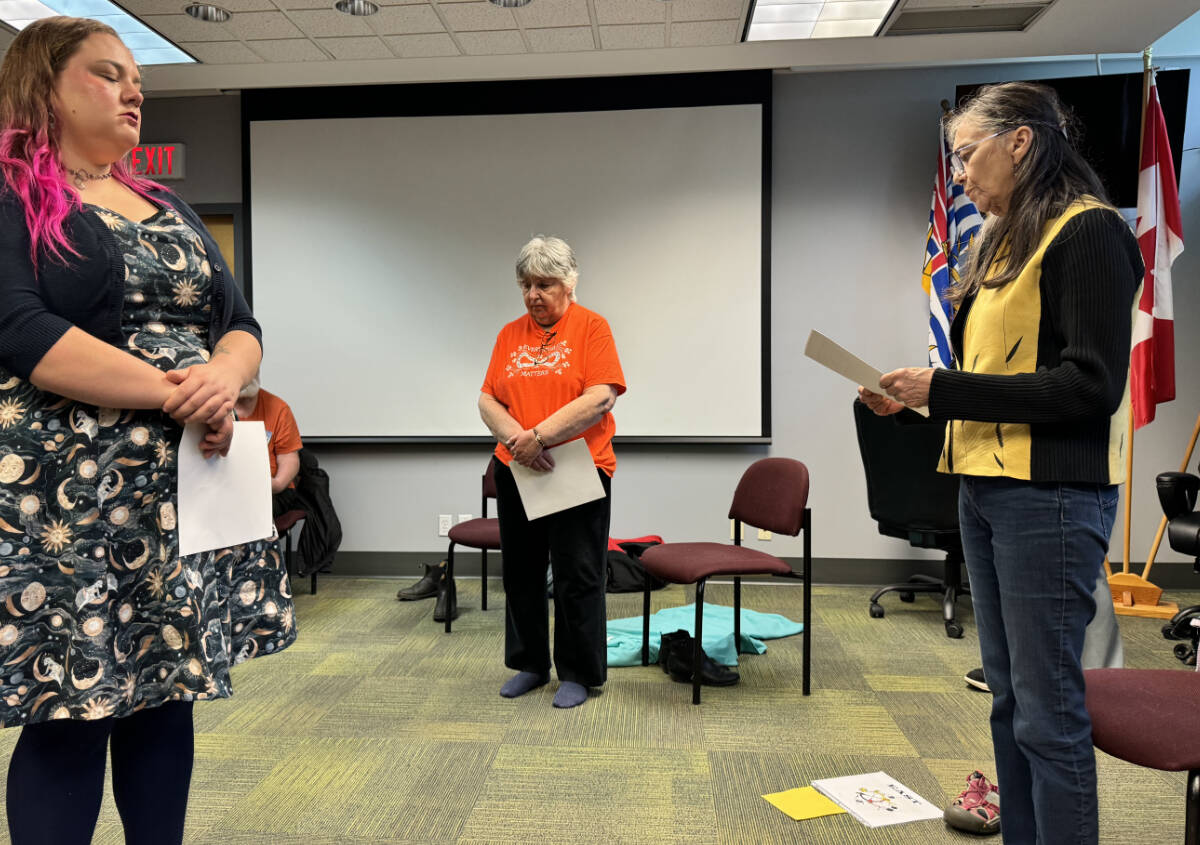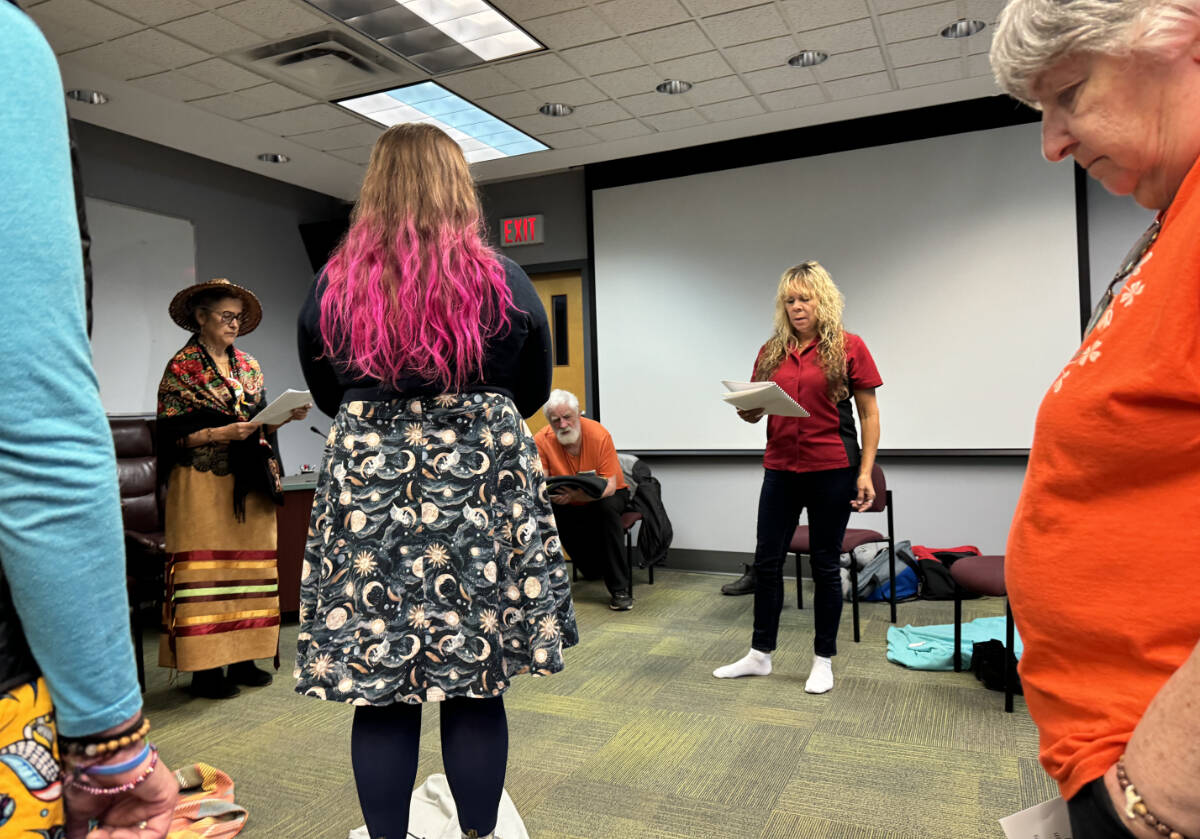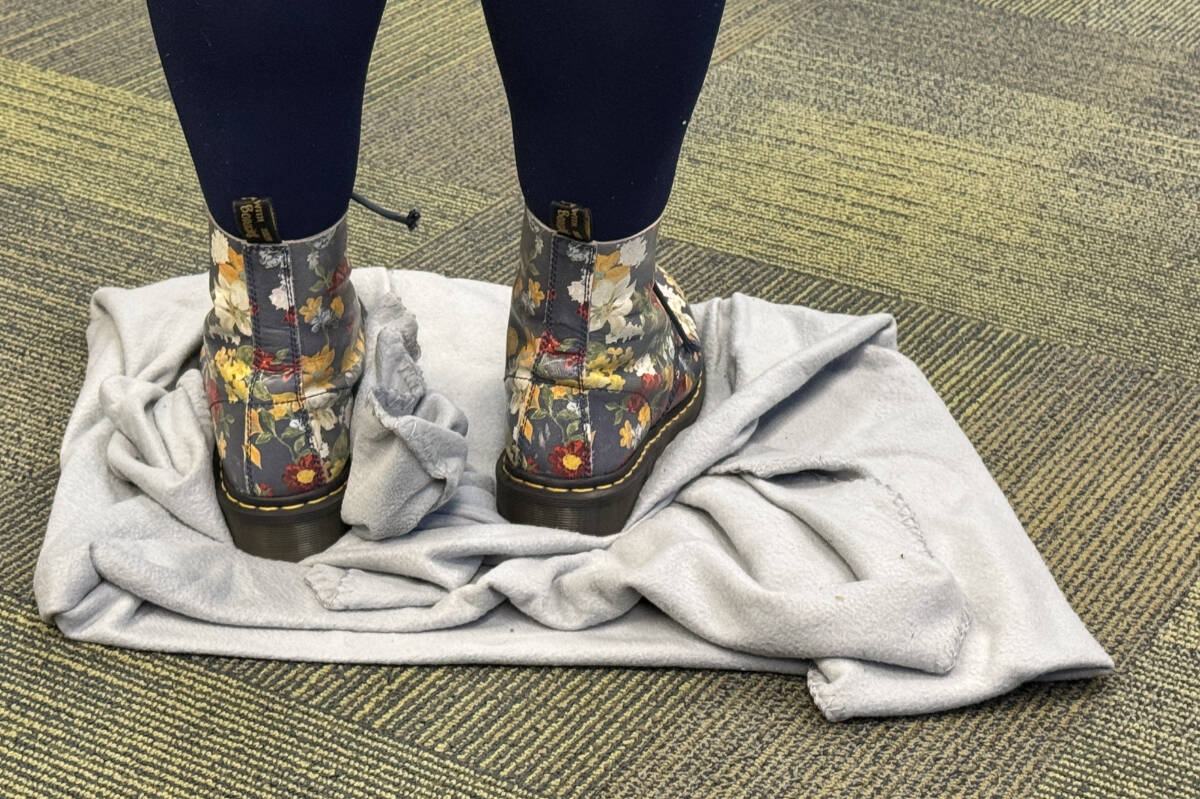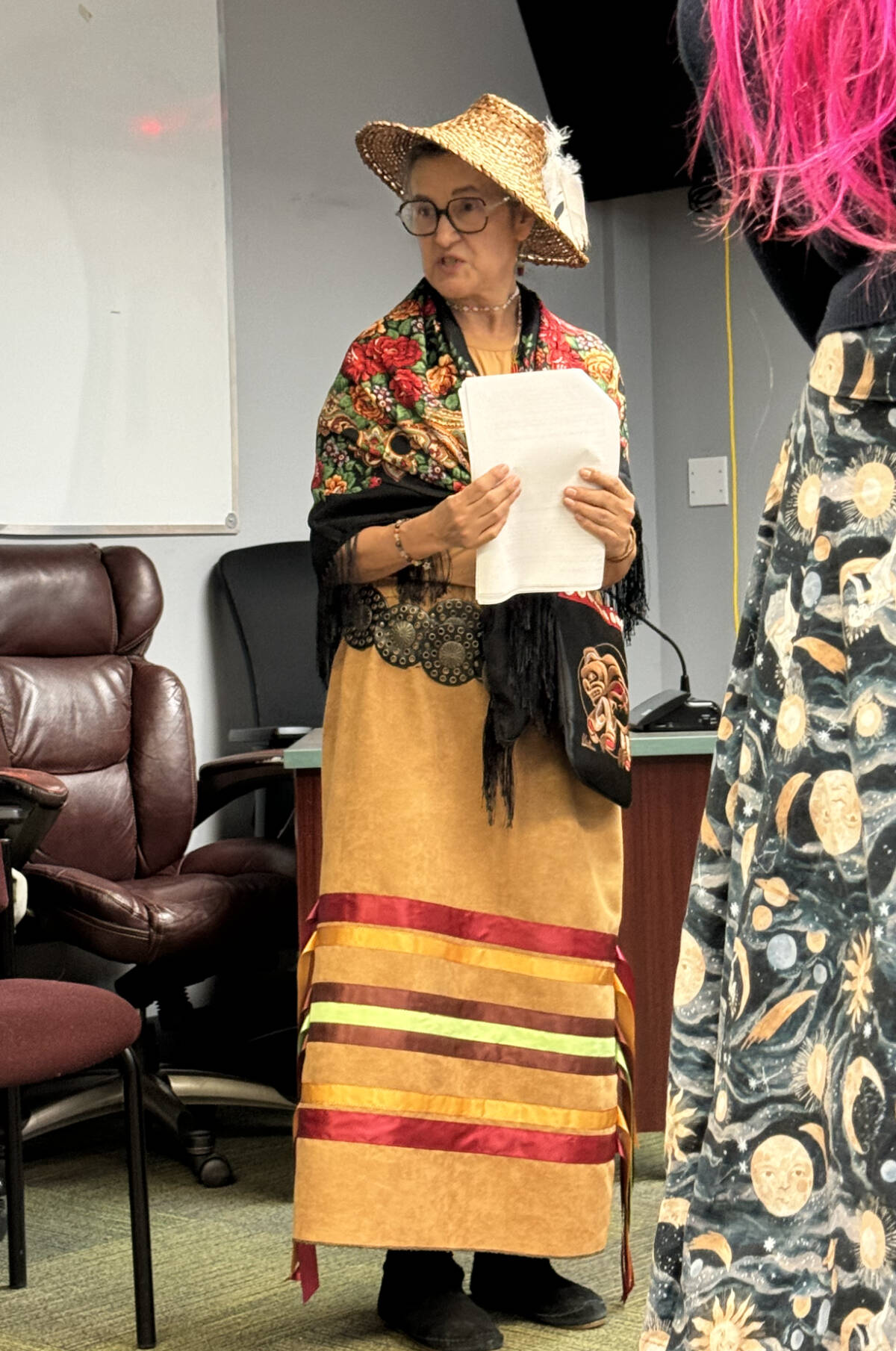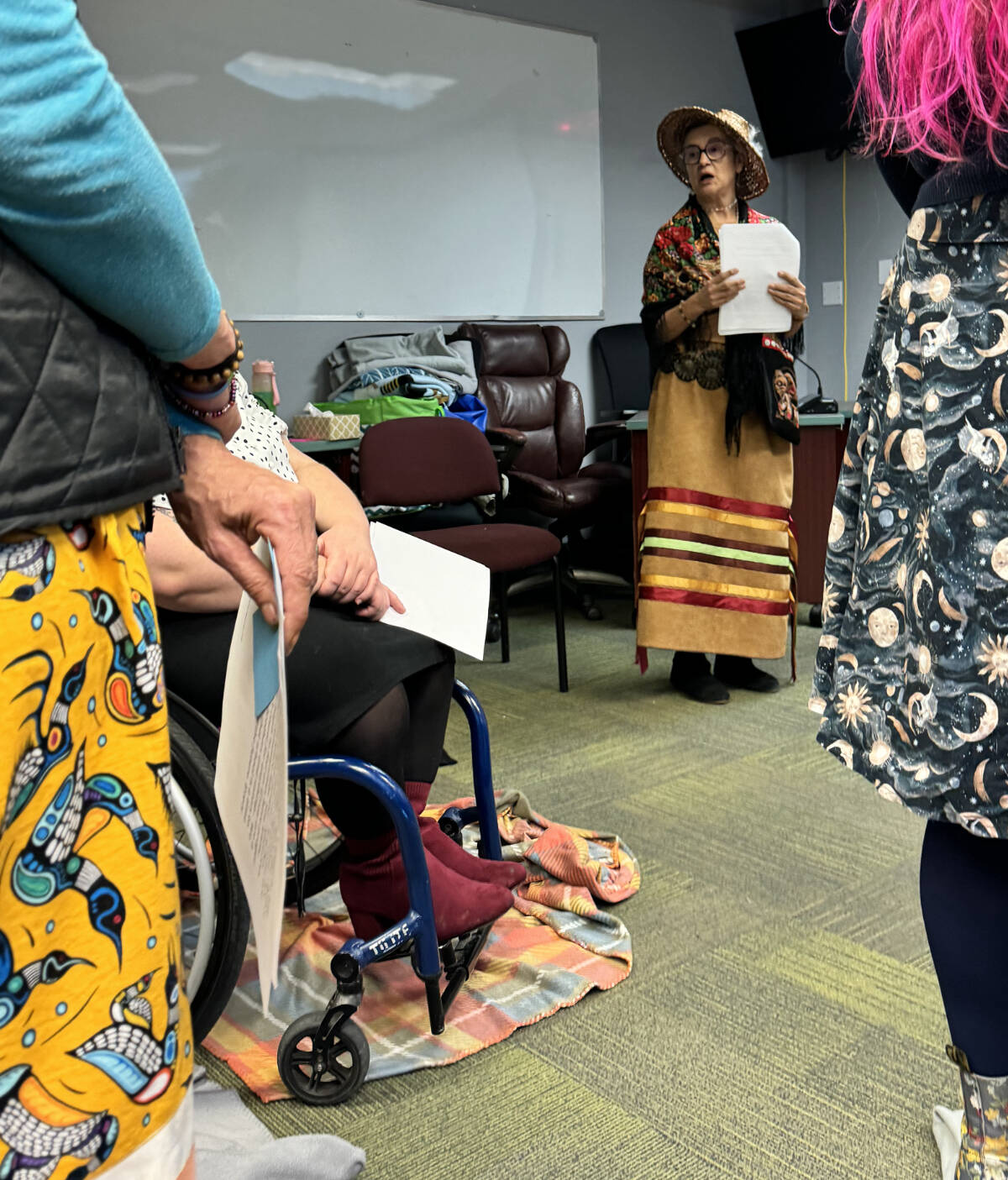I was standing on a fleece lap blanket, alongside a woman in a ribbon skirt, large silver earrings with bears on them, and wrists draped in bracelets.
We had some space to move and hadn’t regarded each other too closely, as we listened to Diane Garner and Carol Peters speak about Turtle Island and the arrival of the Europeans.
Prior to being relegated to our blanket, we had been moving freely and greeting the other people in the room, as we began our journey with the KAIROS blanket exercise.
Suddenly, our little blanket was made even smaller when Garner came to turn up its corners.
My neighbour and I looked at each other, an instant mix of panic, curiosity, horror and anxiety creeping across both of us.
Who is this person beside me? Is she a friend or a foe? Will she share this space with me peacefully, and will we have to fight to keep this space together?
As the workshop went on, the blanket got smaller and smaller. Eventually, I was chosen to perish as a representative of all Metis people in Canada.
I was sent off my reserve/blanket to my seat, and I felt the others in the room mourn my loss as they stood on what was once Turtle Island, but was now just a smattering of small, shrinking reserves.
We were all dying.
We were all trying to survive, and the loss of our once large space was still very clear in our minds.
Over the course of the next hour, I watched from my seat as Indigenous people across this land fought off an encroaching monarchy, government, and men whose names live on as we honour them with streets names, mountaintops, lakes and rivers.
I felt sad, and mourned a little for something that was never mine.
I saw Turtle Island as it once was, as a patchwork of First Nations who had their own system of governance and treaties long before my ancestors arrived here. I saw that they both welcomed the intruders with optimism and belief in the treaty process, and then felt hurt and confused by those who broke their promises.
And while I’ve been on a personal journey to learn more and more about this land’s history, especially regarding residential schools and the intergenerational trauma that they still cause today, I could see very clearly in this room that the lingering old-school history lessons are a part of my learning.
I had heard about the KAIROS blanket exercise several years ago, and was immediately intrigued. It’s been an important tool for Truth and Reconciliation, and is something that RCMP officers, public service workers, educators, politicians, church members and more have been participating in for decades.
The Hope Inclusion Project’s Truth and Reconciliation event that took place last week included a chance to participate in the exercise.
I’ve been reflected on this experience in the days since, and I keep going back to that instant of shock, as this land I was sent to stand on by outsiders was then slowly taken away from me.
I remember the shock in my neighbour’s eyes that reflected exactly what I was feeling. And then our connection afterward as we discussed that key point in the exercise.
Talk of decolonization often brings about knee-jerk reactions that range from defensiveness to anger. But this wasn’t about ‘white guilt,’ and it certainly wasn’t about blame. This is just the truth, and probably once of the most important parts of reconciliation.
It’s an exercise in empathy, and fills in some of the holes in our collective learning as Canadians. Our history that failed to acknowledge the thoughts, feelings and beliefs of entire communities of people.
There were also threads of hope on those blankets. And they did get bigger again, as the facilitators talked about the changing relationships between Indigenous people and Canada, and the reclamation of culture, and the strength of First Nation matriarchs.
To learn more about the blanket exercise, visit kairosblanketexercise.org.
READ MORE: PHOTOS: Two days of Truth and Reconciliation in Hope
ColumnTruth and Reconciliation

